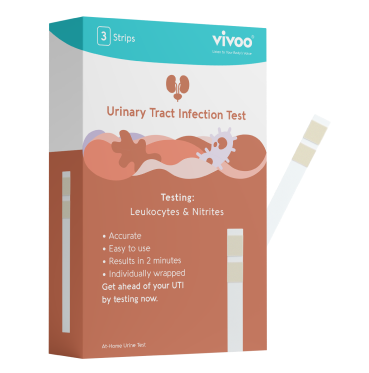Free Radicals
Free radicals are highly reactive molecules that are naturally produced in the body as a byproduct of metabolism or by exposure to environmental toxins such as ultraviolet light and tobacco smoke [2]. Excess amounts of free radicals in the body can damage the membranes of cells through a process known as oxidative damage. As MDA is the end product of lipid peroxidation (i.e., the process where free radicals attack fat molecules in the body), urinary MDA levels can be used to determine your current oxidative stress levels.
Malondialdehyde
Malondialdehyde (MDA) is a lipid peroxidation biomarker generated during the oxidative degeneration of fat molecules [1]. In other words: an increase in free radical activity is often associated with the overproduction of MDA.
The biomarker (i.e., MDA) can be detected in most biological samples – including urine. The compound’s easy detection explains why it’s now one of the most reported analytes for evaluating the effects of oxidative stress on lipids.
How Can You Test Oxidative Stress Levels at Home with Vivoo?
Are you interested in checking your free radical levels? You can do it with Vivoo! The Vivoo App lets you check your oxidative stress level at home by providing a clear reading. You can use our at-home urine test strip to get real-time data on other parameters like magnesium, calcium, ketones, and hydration levels. Check your overall wellness in the comfort of your home!
Vivoo also has unique features that allow you to stay on top of your wellness. Some of its features include a wellness score and detailed feedback on each parameter along with valuable and personalized advice on your diet.
How to Evaluate Possible Results?
Free radicals can cause damage to the body. More specifically, when the balance between free radicals and antioxidants present is disrupted, the former can cause oxidative damage to cells in the body. This is a phenomenon known as “oxidative stress”.
Thankfully, Vivoo helps you keep an eye on your urinary MDA levels, and provides you with a way to adopt the necessary nutritional and lifestyle changes needed to achieve oxidative equilibrium (i.e., wellness).
- Score:10/10
- Label: Great
- Value: Negative
Optimal oxidative stress level: if Vivoo measures a negative urine MDA value, it means that your body is maintaining the necessary balance between free radicals and antioxidants.
- Score:5/10
- Label: High
- Value: Positive
Too many free radicals in comparison to antioxidants: if Vivoo measures a positive urine MDA value, it means that your body contains too many free radicals compared to antioxidants, and is thus subjected to oxidative stress.
How to Control Oxidative Stress?
The body needs both free radicals and antioxidants. It is important to maintain the balance between them. The key to doing so lies in preventing the formation of free radicals in the first place, which means you need to find ways to reduce your exposure to various oxidative stressors [6]. Below are some ways you can help lower your oxidative stress:
-
Eating a balanced diet rich in fruits and vegetables
-
Limiting consumption of processed foods, especially foods high in sugar and fat
-
Regular exercise
-
Meditation
-
Quitting smoking
-
Reducing stress
-
Preventing or reducing exposure to pollution and chemicals
-
Maintaining a healthy body weight
Urinary MDA levels are indicative of your oxidative stress levels. Given this, it is best to strive for minimal amounts of the compound in your urine. Changing your lifestyle habits is key to preventing these conditions. Quitting unhealthy and harmful practices is helpful as they’re known to be a significant cause of oxidative stress. Also, consider adopting other healthy habits, like heading out for a walk a few times a week, as these habits can help lower your stress levels and in turn, reduce oxidative stress in the body.
Which Factors Increase Your Level of Oxidative Stress?
Free radicals form during the body's metabolism of regular substances. The presence of these free radicals leads to a state known as oxidative stress, named as such because the chemical reactions generating free radicals take place in the presence of oxygen, causing stress. Factors that may increase an individual’s level of oxidative stress include [2]:
-
Lifestyle
-
Diet
-
Environmental conditions such as pollution and radiation
-
Alcohol consumption
-
Tobacco products
-
Some medications
-
Exposure to hazardous chemicals and pesticides












